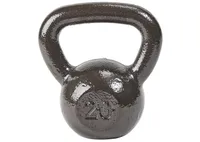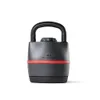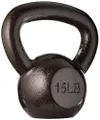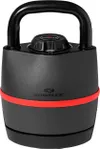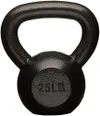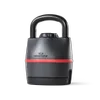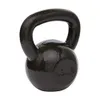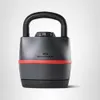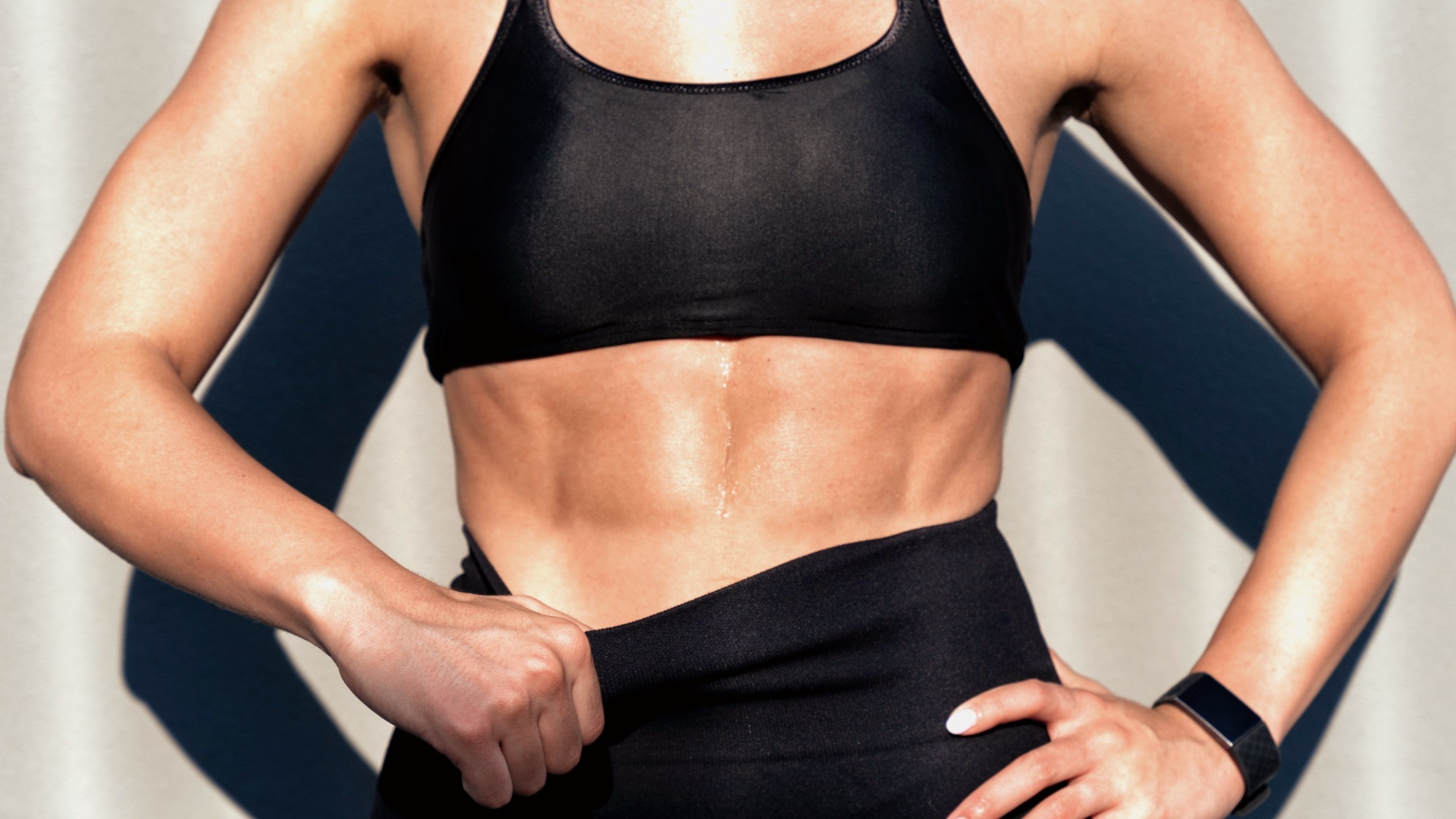
Park the overprescribed crunches, planks, or Russian twists and sweep aside the standard bodyweight core exercises. Give your next abs workout a refresh with these three kettlebell abs exercises worthy of building your upper body.
The routine takes 15 minutes to complete and you only need to master three moves. But set your expectations now; this kettlebell workout will torch your midsection, but remember to adopt a regular and consistent exercise routine to build muscle definition or improve strength over time, adapting load and difficulty as you get stronger.
If you’re ready to get moving, grab one of the best kettlebells for weightlifting and give these upper-body exercises a go.
What are the 3 kettlebell abs exercises?
We recommend watching the videos to learn how to do each move before you jump into any new workout regime. Kettlebells are versatile strength and conditioning tools, so there are many ways to hold them. Swat up on the different grips using our guide explaining how to hold a kettlebell.
We’ve put together this routine to give your whole core a searing workout using one medium to heavy kettlebell. You can double up if you want to increase the overall load but you won’t need to for this workout. You could also load the weight to one side of your body and switch halfway through the reps.
We love unilateral training (loading one side of the body at a time) for isolating the left and right muscle groups while recruiting your various core muscles for stability; this can help outtrain potential muscular imbalances lurking and teach your body to recruit, coordinate and balance better.
Amazon Basics kettlebell: now $24 @ Amazon
Save money on the Amazon Basics kettlebell in a range of weights. We strongly recommend buying chalk or grip gloves as the grip isn't top notch, but for the price, this does the job for kettlebell beginners.
1. Kettlebell in-and-outs
Choose any kettlebell and lay it on its side or upright with the horns facing upward. Sit with your hands on the floor close to your hips and slightly lean back, bracing your stomach and maintaining a neutral spine. Lift your chest and sit tall. Keeping your legs straight and pressed together, sweep your legs up and over the kettlebell, moving from side to side. You can bend your knees to make it easier.
Get instant access to breaking news, the hottest reviews, great deals and helpful tips.
The exercise recruits the lower abdominal muscles, hips, hamstrings and quads, lower back and obliques, and you can slightly rotate your hips as you move to help activate your waist. For a seriously fiery alternative, practice placing your hands behind your head.
2. Kettlebell butterfly sit-ups
The butterfly sit-up is just like a regular sit-up — sitting on the ground and moving between laying on your back and driving upward into a seated position, over and over, until your abs are screaming.
However, butterfly sit-ups remove the hip flexors from the equation and help isolate your abs and deeper core muscles — the transverse abdominis. Be mindful of your lower back during the exercise, and try to press your feet into the ground.
To do them, bring the soles of your feet to touch and allow your knees to fall outward. You can position your hands behind your head or across your chest to begin with, then when you feel confident, hold a kettlebell to your chest to increase the resistance.
3. Kettlebell sit and press
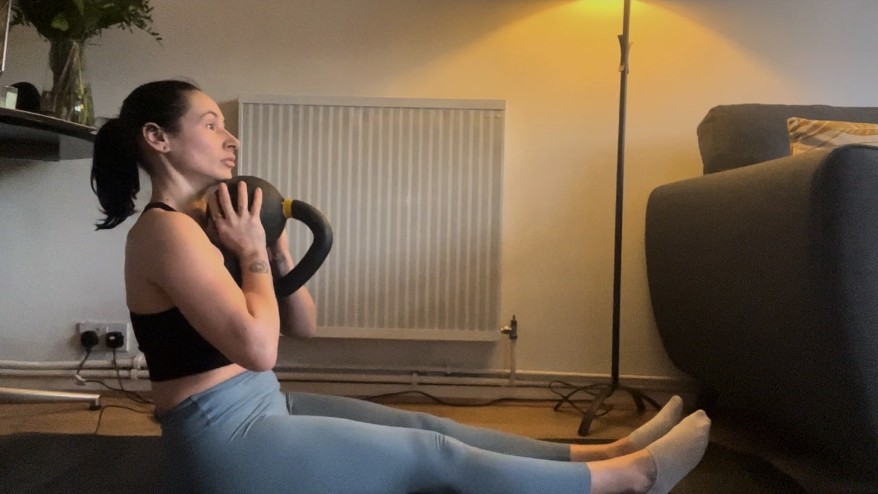
Sit on an exercise mat with both legs extended, then brace your stomach and lift your chest, maintaining a neutral spine. Imagine a string at the crown of your head, pulling your torso upward. At the same time, press the backs of your legs into the mat. Hold a kettlebell at your chest, press the weight overhead, then return to the starting position.
Although the move feels like an overhead press, hitting your triceps, shoulders and pecs, the move recruits your lower back, hip flexors, hamstrings and core muscles to keep you stable and help drive the weight.
To progress the exercise, lay on the ground with the kettlebell at your chest and legs extended, perform a sit-up and press the weight overhead. Slowly roll back down to the starting position as you lower the weight to your chest.
For those with niggly or tight hamstrings, slightly elevate your hips using a yoga block or cushion to take some pressure off.
How to do the 3-move kettlebell abs workout
We recommend one of the best yoga mats and a kettlebell. Here’s the workout.
15-minute EMOM: Every 90 seconds x 10 rounds
- Kettlebell in-and-outs x 10-12 reps
- Kettlebell butterfly sit-ups x 10-12 reps
- Kettlebell sit and press x 10-12 reps
Set a rolling 15-minute timer. Perform 10-12 reps of the exercises above back-to-back within 90 seconds, then take the remainder of that time to rest. Repeat for 10 rounds, totaling 15 minutes. The quicker you finish, the more rest you’ll have, but don’t compromise the quality of your reps to finish in time.
Scale the reps as necessary, but once you’ve completed the first round, stick to the chosen reps and hit them consistently for the remaining rounds. It’ll hold you accountable and keep your rest time consistent, too. Aim to rest for no longer than 20 to 30 seconds to keep the intensity high, and challenge yourself with your weight selection. Finishing too early? Don't be afraid to increase the load or reps.
More from Tom's Guide
- Forget sit-ups — build a stronger core and boost your balance with this 25-minute standing abs workout
- You don't need the gym to build a stronger core — use these 3 dumbbell abs exercises instead
- Forget barbells — sculpt your core and lower body with this 5-move kettlebell workout

Sam Hopes is a level 3 qualified trainer, a level 2 Reiki practitioner and fitness editor at Tom's Guide. She is also currently undertaking her Yoga For Athletes training course.
Sam has written for various fitness brands and websites over the years and has experience across brands at Future, such as Live Science, Fit&Well, Coach, and T3.
Having coached at fitness studios like F45 and Virgin Active and personal trained, Sam now primarily teaches outdoor bootcamps, bodyweight, calisthenics and kettlebells.
She also coaches mobility and flexibility classes several times a week and believes that true strength comes from a holistic approach to training your body.
Sam has completed two mixed doubles Hyrox competitions in London and the Netherlands and finished her first doubles attempt in 1:11.
